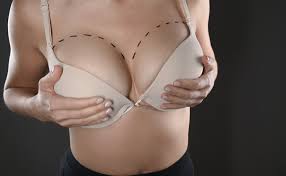Breast reconstruction offers a path to reclaiming body confidence and restoring a sense of wholeness for those who have undergone mastectomy due to cancer or other reasons. It is a transformative procedure that can significantly improve a person's quality of life. Understanding the options available, the recovery process, and what to expect can help individuals make informed decisions about their journey to reconstruction.
Types of Breast Reconstruction:
There are several methods for Breast Reconstruction in Dubai (إعادة بناء الثدي في دبي), each catering to different needs and preferences. The primary approaches include implant-based reconstruction and autologous tissue reconstruction. Implant-based reconstruction involves using silicone or saline implants to recreate breast volume. Autologous tissue reconstruction, on the other hand, uses tissue from the patient’s own body, such as the abdomen, back, or buttocks, to construct a new breast shape. Each method has its benefits and potential complications, so choosing the right one depends on personal circumstances and medical advice.
Preparation for the Procedure:
Preparing for breast reconstruction involves a series of medical assessments and consultations. It’s essential to discuss expectations, desired outcomes, and any medical conditions that could affect the surgery. These discussions ensure that the chosen procedure aligns with individual health and lifestyle. Additionally, mental preparation is just as important, as undergoing such a significant transformation can be emotionally taxing.
Recovery Process:
Recovery from breast reconstruction varies depending on the procedure performed. For implant-based reconstruction, recovery is usually quicker, with some discomfort and bruising lasting a few weeks. Autologous tissue reconstruction may require a longer recovery time due to additional surgical sites and more extensive healing. Pain management, wound care, and activity restrictions are standard parts of the recovery process. Follow-up appointments are crucial to monitor progress and manage any post-operative issues.
Emotional and Psychological Impact:
The emotional and psychological aspects of breast reconstruction are often as significant as the physical aspects. Individuals may experience a range of emotions, including relief, excitement, anxiety, or even grief. It is normal to feel a mix of emotions as one adjusts to a new body image. Support systems, whether through counseling, support groups, or close relationships, play a vital role in the recovery journey, helping individuals cope with the changes.
Long-Term Considerations:
Over time, adjustments to the reconstructed breast may be necessary to achieve the desired look and feel. This might include additional procedures to refine the breast shape, manage complications, or restore nipple sensation. It is important to maintain open communication with healthcare providers throughout this ongoing process. Additionally, individuals should be aware of the psychological adjustments that may be required as they continue to embrace their new identity.
Quality of Life:
Ultimately, breast reconstruction aims to improve quality of life. For many, it helps in reclaiming confidence, enhancing body image, and resuming a normal lifestyle. The procedure can also enable individuals to engage in activities and experiences that they might have felt restricted from post-mastectomy. Breast reconstruction offers an opportunity to regain a sense of femininity and comfort in one’s own body.
Conclusion:
Breast reconstruction is a personal and often complex decision that requires careful consideration. By understanding the available options, preparing adequately, and seeking the right support, individuals can navigate their reconstruction journey with confidence. The choice to undergo this procedure is a step towards reclaiming a positive self-image and enjoying a more fulfilled life post-mastectomy.

